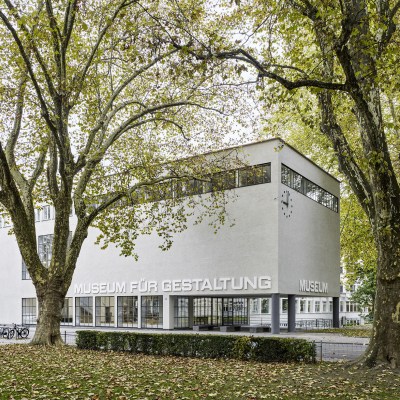
Switzerland’s cities are home to some of the greatest museums and cultural venues in Europe. What better way to discover them than by following the tips of art-world insiders who have made their homes there and have a fast-track into the best that the Swiss cultural scene has to offer? In the final part of Apollo’s ‘My Cultural City’ series, the Spanish-Swiss architect and engineer Santiago Calatrava leads us on a tour of Zurich – from the buildings he loves to the restaurants where he feels most at home.
Santiago Calatrava

Zurich has long been an important part of my life. I came here for the first time when I was 20 years old and returned as a student two years later. For eight years I studied at ETH Zurich, where I completed a PhD. I met my wife in this city and all my children were born here. And although we moved to Paris when I was in my late 30s, and then later two New York, we came back to Zurich to live here again about four years ago.
I love living here. For the city’s modest scale, with a population of little more than 400,000 people, it has amazing cultural opportunities. Yes, it’s a global city, which for its size is extraordinarily well connected to the rest of the world: there are several direct flights a day to New York, flights to London, to Tokyo, to the Middle East, to wherever you want. But the city itself has a wonderful human scale and you can walk or cycle everywhere. It’s closely connected to the natural world: from the city centre, you can reach the forest quickly, or in an hour and half, get to the Alps (I love skiing). For me nature is very much part of the character of the city.
The Grossmünster in the Aldstadt (old town) of Zurich. Courtesy Switzerland Tourism

Architecturally, it’s difficult for a small city like Zurich to compete with cities like London or New York. It certainly has its own architectural culture, though, both in the charm of the medieval centre, which is almost untouched, and in the buildings that were constructed after the Industrial Revolution, when the city broke out from its ancient walls and began to extend along both sides of the lake. If you take an architectural tour of the city, for perhaps half a day, you get the impression of a place that has kept in step with the times: ancient, medieval, modern and contemporary.
I live very close to Pavillon Le Corbusier, which for me is one of the most beautiful buildings in the city. The Swiss interior designer Heidi Weber always said that Zurich deserved a building by Le Corbusier, whose work she collected, and the result was this small pavilion meant to house his art. It’s a jewel. If I were taking someone on a tour of the city, I would also show them the Leuenhof, once the headquarters of the Bank Leu and an art nouveau building that has a meticulously beautiful cashier hall. I’d also take them to the main building of the University of Zurich, designed by Karl Moser, with its extraordinary internal courtyard filled with light. So we’d see a building for art, commissioned by a private individual, a bank and an educational building: a good introduction to the city. It’s also well worth visiting Zurich West, a former industrial zone that has been creatively reimagined as a district filled with restaurants and new arts venues.
Pavillon Le Corbusier. Photo: Betty Fleck; © ZHdK

I’m very passionate about classical music. The quality of concerts in Zurich is exceptional, with brilliant performers and conductors, though this tradition is perhaps not as well known internationally as it ought to be. Imagine what it was like to be in the Tonhalle when Johannes Brahms conducted its inaugural performance! Zurich has three great orchestras, which is remarkable for a city of its size: the Tonhalle-Orchester, the Zürcher Symphoniker and, at the opera house, the Philharmonia Zürich. Even when I was a student, with a small budget, I used to buy a season ticket for the Tonhalle; there were afternoon concerts, I think on Thursdays. One of my favourite memories is of sitting close to the piano when Daniel Barenboim was performing. My wife and I had bought the most expensive tickets, even though we couldn’t really afford them.
The Tonhalle. Photo: Georg Aerni; © Tonhalle Orchester Zürich

At the moment lots of people are talking about the extension to the Kunsthaus Zürich – and particularly about the Bührle Collection, which has been rehoused at the museum this year and has important Impressionist and Post-Impressionist paintings. But there are two other artistic highlights in Zurich that I wouldn’t want any visitors to miss. Firstly, the stained-glass windows by Marc Chagall in the Fraumünster – an absolute masterpiece. And secondly, the Alberto Giacometti-Stiftung, which is based at the Kunsthaus and is one of the most important organisations for 20th-century sculpture, up there with the Henry Moore Foundation in the UK. At the Kunsthaus, the display of so many works from the foundation’s collection gives a very clear view of Giacometti’s achievements.
The extension of the Kunsthaus Zürich, designed by David Chipperfield and opened in autumn 2021. Photo: © Juliet Haller, Amt für Städtebau

When it comes to restaurants, I’m a creature of habit. I like to go to places where I know the staff and they know me. My favourite place is probably the Kronenhalle, an extraordinary restaurant that is also a temple of culture. It has a great art collection, with pieces by Matisse, Picasso, Miró and other artists, many of whom knew the owners, Hulda Zumsteg and her son Gustav. Important historical and literary figures – Lenin, Thomas Mann, Hermann Hesse – were regulars here. The restaurant is very much in the spirit of Zurich, not too formal. Another place I love is the terrace of Baur au Lac hotel, which I can easily walk to from my office. It’s a wonderful place in the summer, in the open air and surrounded by the beautiful garden. I’d also recommend Orsini, which has exceptional Italian food. If you want to take in some of the history of Zurich while you’re eating, there are also high-quality restaurants in many of the ancient guild houses.
The Kronenhalle. Photo: Dominik Baur; © Zürich Tourism

I won’t give any hotel recommendations because, for me, the city is home. What I will say is that it would be hard to go wrong with hotels in Zurich. Thanks to the hotel schools in Lausanne and Lucerne, among other places, hospitality is of an incredibly high standard throughout Switzerland. Of course, it was the English who first discovered Switzerland as a tourist destination: they started the trend of visiting the mountains!
Einsiedeln Abbey. Photo: Christof Sonderegger; courtesy Switzerland Tourism

I always tell visitors to head to the Lindenhof, the park above the city which is really its place of foundation. The Romans called it Turicum and had their military camp there, safely above the unpredictable river below. Further afield, the baroque abbey of Einsiedeln is well worth visiting. And Lucerne, one of the great European centres of classical music, is only 45 minutes away by train. The concert hall there is very close to the station: you can easily go to a concert in Lucerne and be back in Zurich the same evening.
The Kunsthaus Zürich is now Switzerland’s largest art museum. To enjoy it at its best book a private tour of the collection or building.
Recommended hotels for cultural tourists to Zurich include
- La Réserve Eden au Lac Zurich, in a historic building recently redesigned by Philip Starck
- Hotel Marktgasse, an ancient guesthouse with fine dining from chef Andreas Caminada
- B2 Boutique Hotel, a stylish hotel and spa located in the former Hürlimann brewery
To find out more about Switzerland’s leading art museums and their upcoming exhibitions, visit the Art Museums of Switzerland website.


